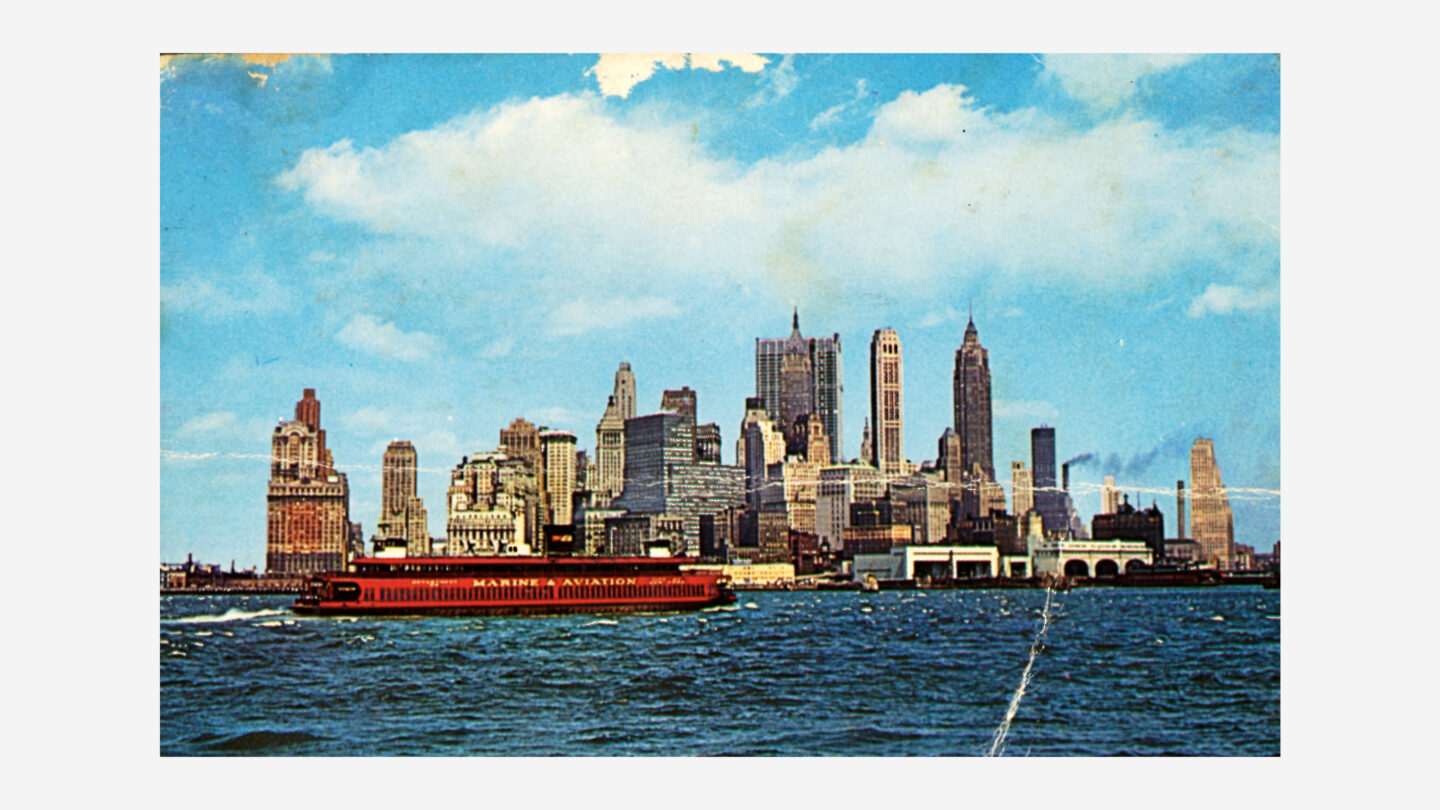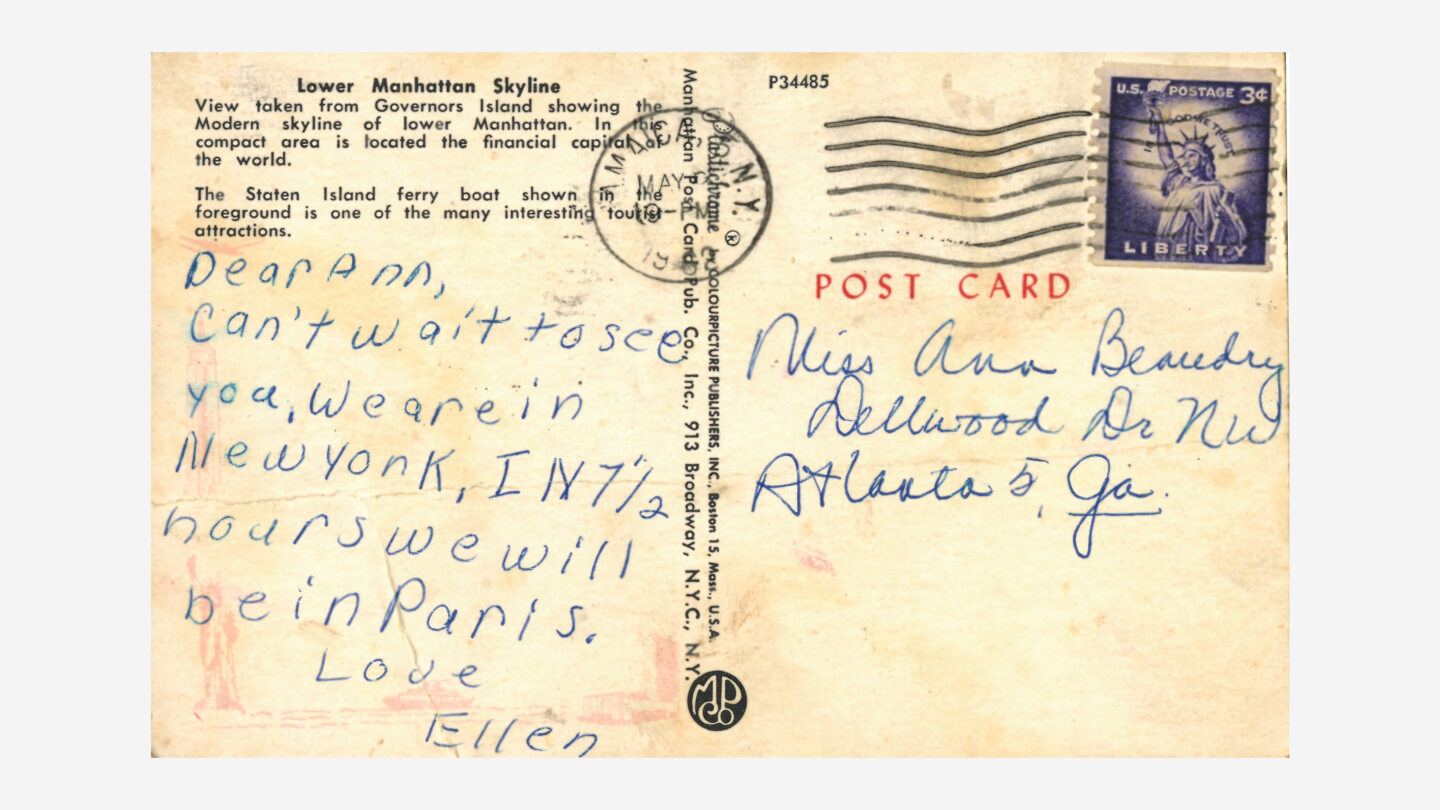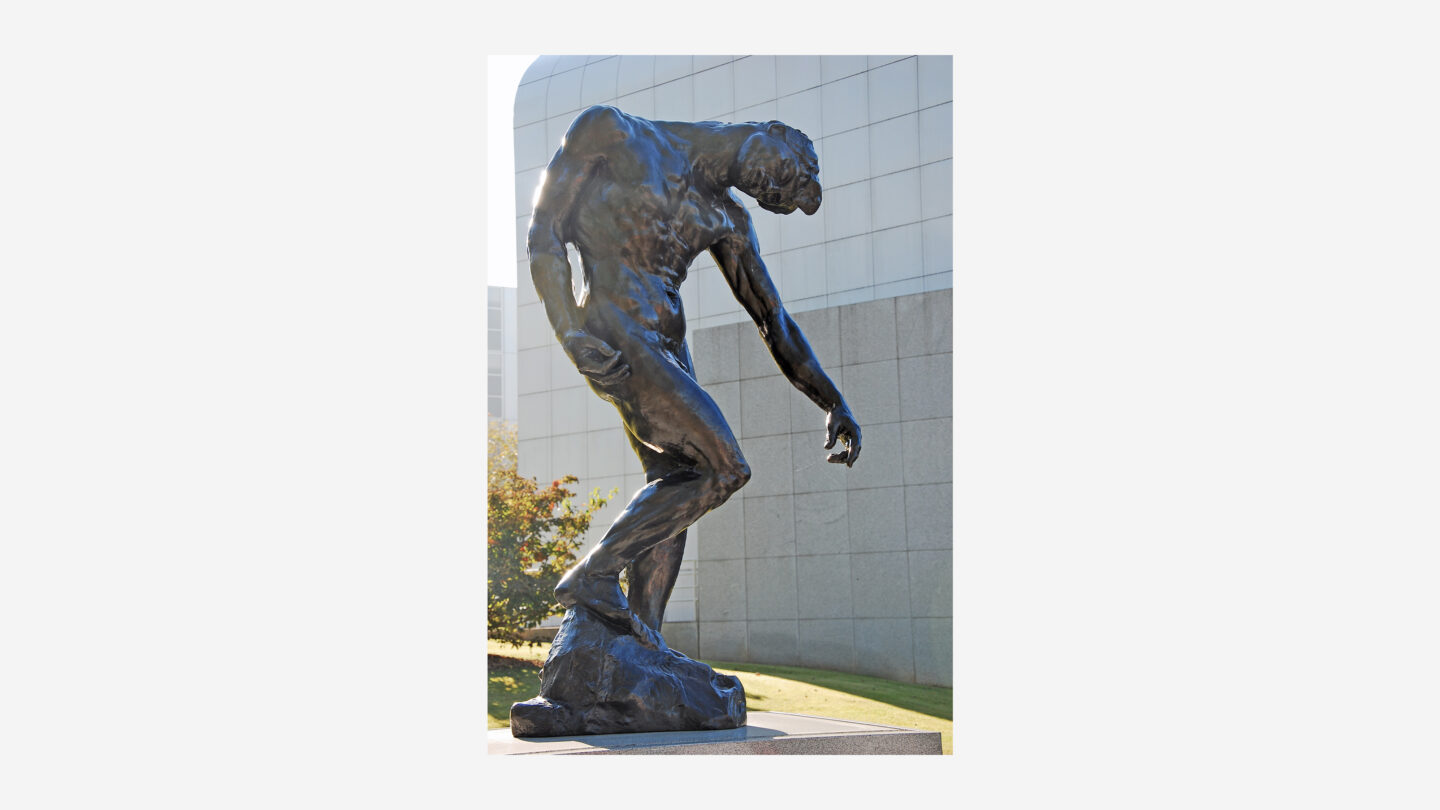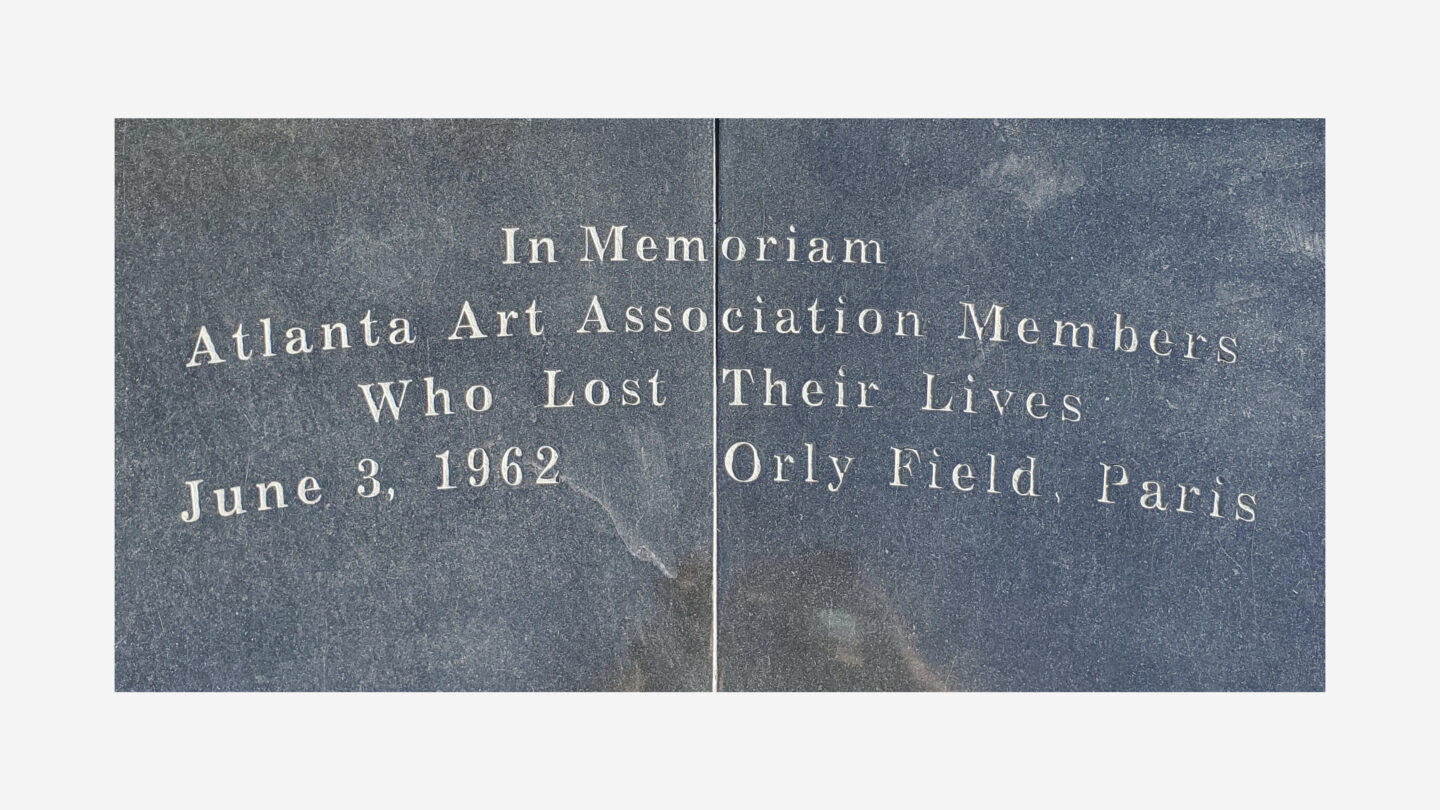Leaving
It was June 3, 1962. The group, many of whom were members of Atlanta’s arts community, had just returned from a whirlwind tour of England, Italy, Holland, and Switzerland where they had seen and experienced Europe’s cultural highlights.
As the group of Atlantans made its way through the airport terminal carrying their large tickets, the men wore suits and hats, the women wore dresses and pearls, and the children were dressed as if headed to Sunday school. When they approached the check-in desk, an airline representative wrote down their details to check them in.
Close to the gate, a manual flip-board sign noted the flight’s destination and number: Atlanta, Air France Flight 007. When the boarding call was announced close to noon, the group walked directly onto the tarmac, enveloped by the open sky above and the distant roar of aircraft engines. Ground crew bustled about, attending to planes, and the aroma of jet fuel lingered in the air.
Before them stood a Boeing 707 jetliner. Blue, white, and sleek, it was the embodiment of modernity and progress. Known as the “Chateau de Sully,” the aircraft was named after a minister of King Henry IV, and it was a symbol of pride for Air France.
This film clip captures unidentified members of a tour group of Atlanta Art Association members boarding an Air France jet at Atlanta Municipal Airport (later named Hartsfield-Jackson Atlanta International Airport) in Atlanta, Georgia in 1962. Kenan Research Center at Atlanta History Center
As the group ascended the roll-away stairs to enter the plane, an air hostess greeted them.
Inside the aircraft, the cabin was spacious. The upholstered, cushioned seats promised comfort, the armrests had built-in ashtrays, and the large windows, equipped with pull-down shades, offered unobstructed views of the skies.
When the group took their seats, the atmosphere inside the plane continued to be lively.
“Most of them seemed so well-educated, courteous,” said Françoise Authie, a 23-year-old Air France flight attendant. “I remember them chatting away, holding onto their souvenirs, sharing their experiences. Such a happy group.”
The hum of conversation was punctuated occasionally by the clinking of glasses as Françoise and her fellow air hosts moved through the cabin, offering complimentary drinks and cigarettes. A sense of community permeated the space, and a wave of anticipation washed over them, as they held on to the thought that they would soon be heading home.
Lift Off
Françoise and her air hostess colleagues Jacqueline Gillet, and Marcel Lugot had finished their rounds. They ensured everyone on the aircraft was buckled in, before hustling to their own seats for takeoff. Jacqueline and Marcel took a two-seat bench, while Françoise chose the collapsible wall seat in the washroom. They exchanged glances, feeling the familiar rush of anticipation as the jet prepared for liftoff.
“The jet started its run,” Françoise said, “but then something felt off. I didn’t know if we even lifted off the ground. The sound of the engines changed suddenly. There was a drop in pitch, and then the bumps began.”
Air hostess Françoise Authie. She was one of flight attendants on Air France Flight 007 on June 3, 1962. New York Daily News, June 5, 1962, via Newspapers.com
The giant aircraft started to sway violently. From her seat, Françoise felt terror grip her. “It was all noise and chaos,” she said. “Then, I lost consciousness.”
When Françoise awoke, the world was a mosaic of fire, metal, and grass. Her safety belt still hugged her frame, and from the twisted wreckage Jacqueline desperately called out to her.
The colossal tail section of the plane had broken away, crash landing amidst trees. It was here that fate played its selective game—while Marcel tragically succumbed to his injuries, Françoise and Jacqueline miraculously survived.
The two young women were surrounded by a scene of unimaginable devastation. The once mighty jet had disintegrated, its fragments painting a gruesome scene on the French countryside. Françoise and Jacqueline held onto each other and ran as far away from the flames as they could.
Françoise said, “We were fleeing from the site when we broke through a garden gate and found refuge in a wheat field. My hand was injured, but that was the least of my concerns.”
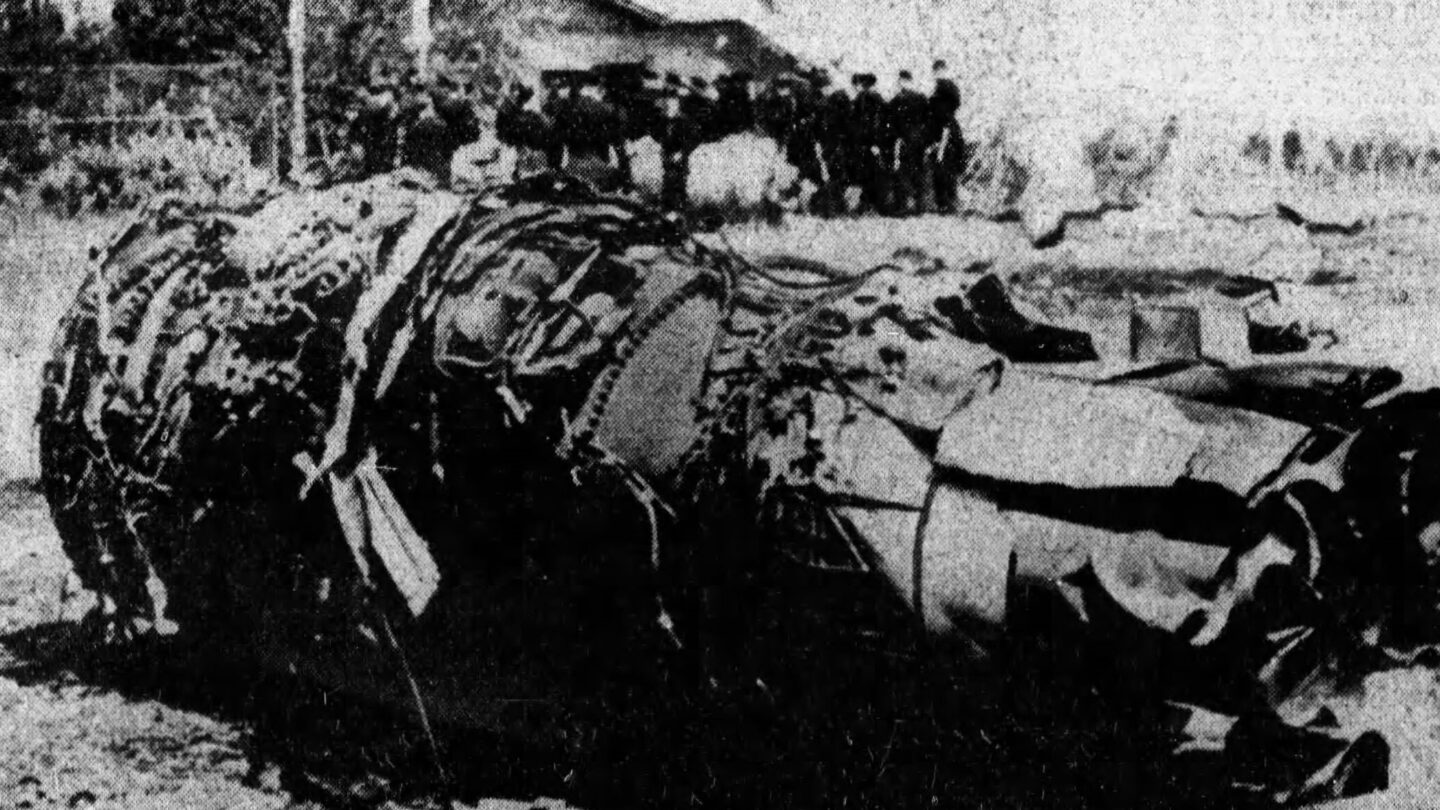
The wreckage of an engine from Air France Flight 007. The Los Angeles Times, June 4, 1962, via Newspapers.com
Jacqueline, though severely injured, had managed to escape the inferno, thanks to the brave bystanders who carried her to safety.
Françoise, still in shock, murmured to her rescuers, “I need to help. Please let me go back.” But the devastating truth settled in; they were the only survivors. Survivor’s guilt burdened Françoise.
“I kept thinking about those people,” she said. “That little girl, only 10 years old. The beautiful pregnant woman. Why was I spared when they weren’t? I felt guilty for being alive.”
The golden sunlight that had greeted the flight’s takeoff had turned crimson, bearing witness to one of the greatest tragedies in aviation history. The remnants of the $6 million airliner lay scattered near the neat gardens and red-tiled villas of Villeneuve-le-Roi, a village in the southern suburbs of Paris that is so close to the runway’s end.
Looking Up
A French military policeman stood at a distance. He watched the Chateau de Sully accelerate down the runway. He saw the plane struggle to gain flight speed. “Something’s not right,” he thought, sensing the jet’s hesitation.
As the plane’s nose momentarily lifted, it slammed back down, speeding uncontrollably forward. The pilot, Michel Hoche, desperately tried to avert disaster, jamming the aircraft’s brakes and reversing thrust. The plane grazed the ground, crashing into airport lights.
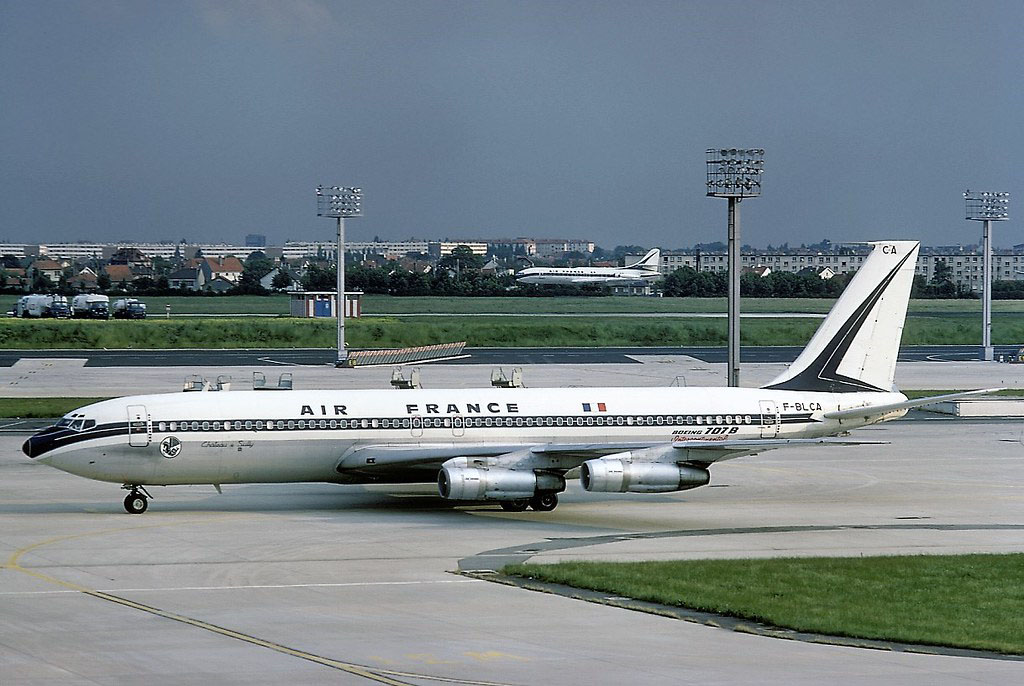
An Air France Boeing 707 taxis at Orly Airport in 1963. This Chateau de Sully is similar to the aircraft members of the Atlanta Arts Association boarded on June 3, 1962. Kenneth Allyn Barton, Flickr
Rafael Garcia, who lived next to Orly Airport, was accustomed to the familiar roar of jet engines. But that day, he heard a different sound—a “noise of desperation.” Racing to his window, his worst fears were confirmed as he watched the aircraft hurtle towards his garden.
“When I looked, I saw the plane crash,” said Rafael. “I saw the plane hit with its nose. Then there was a terrible explosion, flames everywhere and big clouds of smoke blacked out the scene. It must have been after two or three that I saw the two air hostesses stumbling towards me, each trying to help the other to walk. They had been blown out of the plane, apparently, by the explosion and landed on the grass. One seemed to be injured but the other apparently was only scratched.”
Pierre Ghiringelli, a garage mechanic and former air force flight technician, was on his rooftop when he saw the doomed plane. “When it hit the rows of marker lights, it began to break up,” he recounted, describing the horrifying scene of the plane crashing then bursting into a tower of flames and smoke.
“Debris Litters Doorsteps of Home,” The Los Angeles Times, June 4, 1962, via Newspapers.com
Other Villeneuve-le-Roi residents, Mrs. Robert Metternich and her husband, were startled by a deafening boom while having lunch. Mrs. Metternich looked outside. She saw fire engulfing the area.
“Fire flew up the side of the house,” she said. “I ran out the back door but had to get back in immediately because of the flames.” When she found a viable exit from her gray stone home, the heat from the fire singed her legs.
First responders from Orly and neighboring towns raced to the scene. Firefighters battled the intense flames, but their water and foam were no match for the burning jet fuel. As the flames from the crash began to fade, firemen wearing asbestos-lined gloves began the grim task of retrieving charred remains from the aircraft. Police put covers over the black, shapeless masses.
Firemen try to put out the fire on the flaming wreckage of Air France Flight 007 at Orly Airport near Paris. The Los Angeles Times, June 4, 1962, via Newspapers.com
The townspeople of Villeneuve-le-Roi had been celebrating the anniversary of the release of its POWs from German prisons after World War II, but in the aftermath of the crash, a somber silence enveloped the town. The curious and the grieving converged, their eyes tracing the smoke that spiraled upwards from the charred remains of the Chateau de Sully. The village had been spared utter destruction by a mere 100 yards, but the emotional scars of that day would remain, a grim reminder of the fragility of life.
Rafael said, “It was two hours before the fire was out. I shall remember it all my life.”
Loss
The breaking news swept through Atlanta like wildfire: An airplane crash in Paris had claimed the lives of 121 of Atlanta’s most respected citizens.
Radio and television stations began broadcasting the news around 7:50 a.m., but the tragedy’s full impact wasn’t felt until about 10 a.m. Many residents were on the way to church or were awakened by distressing calls from overseas.
Front page of an 18-page special edition of the Atlanta Journal from June 3, 1962. Kenan Research Center at Atlanta History Center
As noon approached, flags were lowered to half-mast in Atlanta, signaling a city in mourning. The magnitude of the loss, both in human life and the cultural void left behind, was unprecedented. Atlanta was no stranger to tragedy, but not since the Winecoff hotel fire in 1946, where 119 souls were lost, had the city witnessed such a calamity.
Newspapers scrambled to pay tribute. The Atlanta Journal printed its first extra edition since the death of Margaret Mitchell, author of Gone with the Wind. The irony was hard to miss; among those lost in the crash was one of the Atlanta Journal’s editors, Margaret Turner. Margaret’s last column, which had been published days before the crash spoke excitedly about the cultural tour, but now served as a haunting reminder of the loss.
Photos of some who died on Air France Flight 007 at Orly Field near Paris. The Arizona Republic, June 4, 1962, via Newspapers.com
Expressions of shock and sorrow echoed across the city. The grief was palpable, especially since many of the victims were associated with the Atlanta Art Association. Del R. Paige, its president, and a leading figure in the city’s cultural scene, was among the casualties. His passing was a severe blow, as he had been at the forefront of plans for a new performing arts center. Fred Bull lost his entire family in the disaster. Alongside the Bulls, an upcoming political leader, the organizers of the fateful tour, and countless others had been incinerated in their seats by a blazing inferno that made the task of identification challenging.
Inside an office at the Fulton National Bank building, Henri Lardon, southern regional manager for Air France, faced an unenviable task. As he sat beneath a photograph of a Boeing 707, he informed the press about the tragedy, while dealing with his own grief – Paul Doassans, one of Air France’s district managers, had also perished in the crash. Outside the office, there was a constant stream of anxious relatives and friends, each hoping against hope that their loved ones weren’t aboard the doomed plane. Every confirmation brought tears, disbelief, and heartbreak.
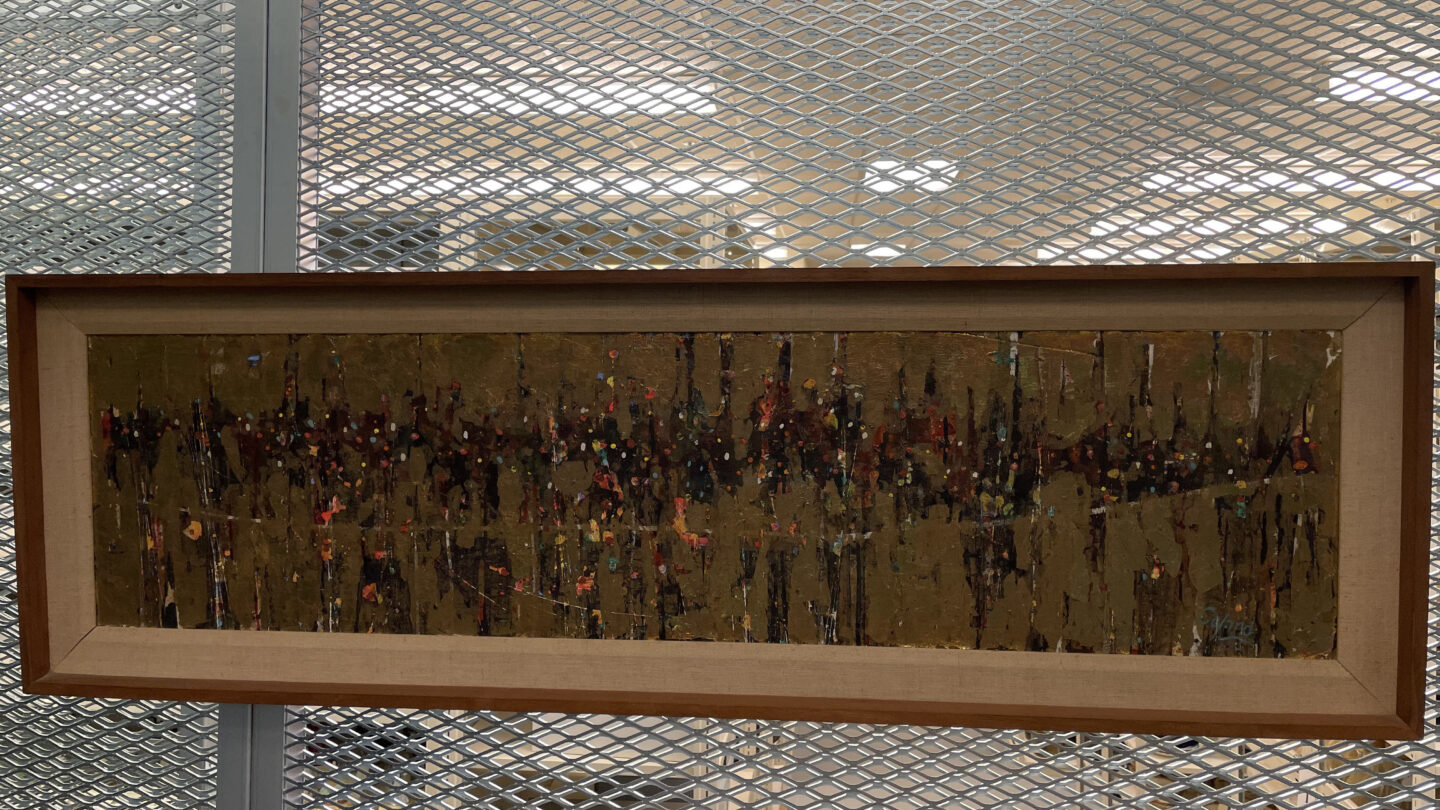
“Procession of the Popes” by W. David Cogland. Gift of Mrs. Jack W. Drinnen, April 2003, Kenan Research Center at Atlanta History Center
Meanwhile, the Atlanta Art Museum, usually closed on Sundays, opened its doors to a grief-stricken community. Inside, visitors sought solace in the art created by some of the crash victims, such as W.D. Cogland, who was known for his abstract art. As they reflected on the immense loss, many people wanted to help in some way and to make sense of the senseless.
Across the nation, tributes poured in.
William B. Hartsfield, the city’s mayor emeritus, somberly referred to the tragedy as the greatest since the Civil War, lamenting the loss of “the cream of Atlanta’s culture.”
President John F. Kennedy expressed his distress, emphasizing the significant loss to both Atlanta and the country.
“Mrs. Kennedy and I are terribly distressed to learn of the plane crash in France which cost your community and the country so heavily,” President Kennedy said via a telegram. “Please convey our deepest sympathy to the families who experienced the tragedy.”
Mary Perkins, 1950. Perkins perished in Air France Flight 007 on June 3, 1962. Her husband, Atlanta architect P.H. Perkins said he was glad she got to see Europe’s famous sights before she died. Kenan Research Center at Atlanta History Center
Yet, amid the collective sorrow, individual stories of grief emerged. Robert Gerson spoke of his parents, Mr. and Mrs. Saul Gerson, who were on their first European trip. Robert had received a call from his fiancée, Michelene Teendeal, who had just bid farewell to his parents when they boarded the plane.
“She watched the whole thing,” Gerson said. The memory of his parents waving goodbye turned to ashes in his heart. They had been talking about it all their lives. They were so happy.”
One husband had watched his wife board the ill-fated plane, thankful that he’d be on the next one, adhering to the couple’s policy never to fly together. Another husband mourned the loss of his wife but took solace in her experience on the trip.
“I’m glad it happened at the end of the tour, so she got to see the things she had always wanted to see,” Atlanta architect P.H. Perkins said of his wife who died in the crash.
Landing
Mayor Ivan Allen Jr. was working on his farm when his wife’s call had pierced the morning calm, sharing the unspeakable news: A plane had crashed at Orly field in Paris, and some of those onboard were Atlantans.
Shocked and shaken, Ivan drove to city hall, the news looming large in his mind. The initial details had crystallized into a horrifying reality: Most of the 130 passengers on the plane were members of Atlanta’s cultural and civic backbone.
The gravity of his role as mayor had never been clearer. “Atlanta has suffered her greatest tragedy,” he said. These were not just citizens; they were friends, family, leaders in art and culture. He had bid many of them farewell, never expecting that it would be the last time he would do so.
“Allen Helping French in Grim Job of Trying to Identify Air Victims,” The Atlanta Constitution, June 5, 1962, via Newspapers.com
Ivan traveled to Paris. When he arrived, he stood at the door of the plane, sorrow pressing down on him. The Parisian wind did little to alleviate the heat of the tragedy that had destroyed the lives of so many from Atlanta. In Paris, he met Françoise Authie, one of the surviving stewardesses, who recounted the last moments of the flight with tears in her eyes. The image of the burning wreckage, still smoldering at Orly Airport, haunted Ivan. He had visited it so that he could accurately relay what he saw to grieving families in Atlanta.
The mayor worked with U.S. Ambassador James M. Gavin and French officials, navigating the bureaucratic maze of identifying the deceased and ensuring their respectful return. Each visit to the mortuaries was an intense experience for him.
“It’s the most difficult job I’ve had to do in a long time,” he said to the Atlanta Constitution.
At a press conference, Ivan commended the French authorities’ cooperation and conveyed that every possible aid was being extended by the French people. Yet, for all the efficiency and support, the pain of the disaster remained raw.
When pressed about the potential cause of the crash, the mayor remained tight-lipped. “The published weight of the plane was within capacity,” he said. And as for the identified bodies? The pain was evident in his eyes as he deflected, “I’d rather not comment.”
The mayor’s turmoil was evident to those close to him. One night, insomnia gripped him, and he wandered the streets of Paris. Aubrey Morris, a news director from Atlanta, noted, “The trip has exhausted and drained him physically and emotionally.”
“Grim Task Over, Allen Comes Home.” The Atlanta Constitution, July 7, 1962, via Newspapers.com
After a series of heartbreaking tasks, including arranging for a joint memorial service, Ivan finally made his weary return to Atlanta. On the return journey, the plane took off from the same runway of the disaster. And as Ivan stepped off the plane back in Atlanta, a somber reality awaited him: A city grieving its lost souls.
As he disembarked, his wife and son rushed to embrace him. In the hushed crowd, a husky-voiced man who was a relative of one of the victims whispered, “God bless you, Ivan.”
Reflecting on the harrowing experience, Ivan recalled the moment he landed in Paris. “They were awaiting me,” he said, speaking of the French officials. The warmth and understanding of the French people were heartwarming during such a traumatic period.
Legacy
Amidst the melodic voices raised in church hymns, a somber announcement shattered the tranquility: A plane had crashed at Orly Field near Paris. Many Atlantans were onboard, returning from a European holiday. The sorrow that gripped the city was profound, and a pressing question arose: how would the city honor the memory of those lost? Suggestions of a permanent tribute began to circulate, perhaps in the form of an arts center.
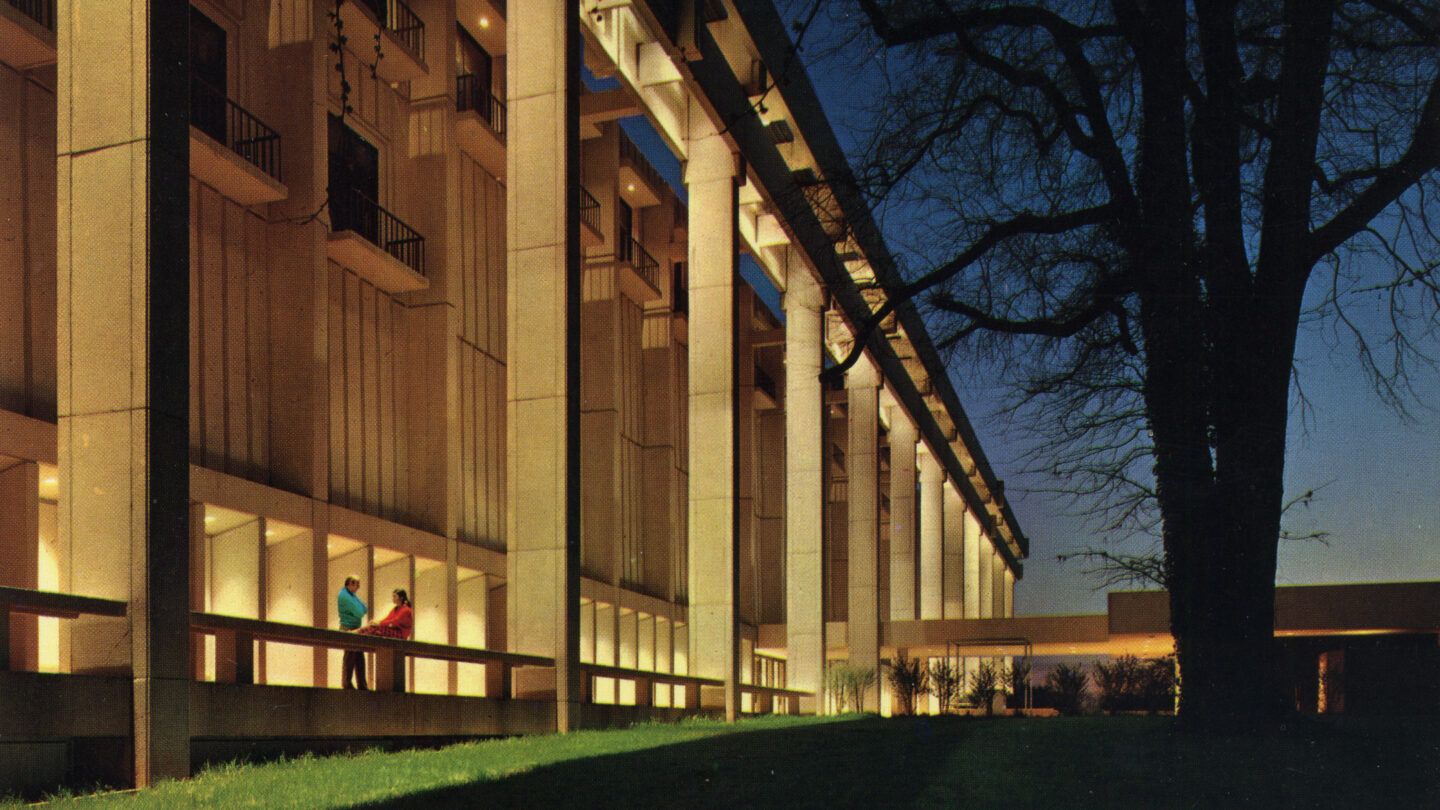
Atlanta Memorial Arts Center, 1968. Atlanta History Center Postcard Collection, Kenan Research Center at Atlanta History Center
The following day, although immersed in sorrow, Atlanta found unity. An anonymous donor, later revealed to be Robert Woodruff, contributed $8 million toward the creation of a memorial arts center. Woodruff’s generosity inspired further support, culminating in the establishment of a multi-purpose arts hub on Peachtree Street that is now known as the Robert W. Woodruff Arts Center. This outpouring of support was a testament to the belief, held since the 1950s by the Atlanta Art Association and others, that the city’s growth was intertwined with the flourishing of the arts.
The tragedy also compelled a reexamination of air travel safety. The Orly crash, lacking crucial flight data, highlighted the urgent need for in-flight recording devices. This spurred the Federal Aviation Agency and the Civil Aeronautics Board to expedite the development of what would become known as the black box, comprising both the Cockpit Voice Recorder and the Flight Data Recorder. Australia became the first country to mandate the installation of cockpit voice recorders in 1963, with the United States soon following, making them compulsory by 1965—a decisive step in enhancing aviation safety.
The aftermath of the crash saw numerous lawsuits, which, after six years, resulted in a $5.2 million settlement for the survivors of 62 victims.
In a gesture of solidarity and understanding, the French government presented Atlanta with a copy of Rodin’s “The Shade.” The statue, which is a symbol of humanity’s relentless quest for meaning in the face of the unknown, bears an inscription that reads “Dedicated to all who truly believe the arts are a continuing effort of the human spirit to find meaning in existence. Orly, France June 3, 1962.”
Decades later, the children of those lost in the tragedy, such as Walt Crimm and Baxter Jones, shared their stories of the news’s blunt impact, the ensuing silence, and their isolation. They faced an expectation to move on without addressing the trauma. Yet, in their stories, there was a thread of hope—a hope that future generations would confront grief with more understanding and communal support.
The legacy of those who perished at Orly Field extends beyond the sadness of their loss. It has become a part of Atlanta’s narrative—a poignant reminder that out of unfathomable loss can come strength, unity, and a collective endeavor to build a meaningful future.



